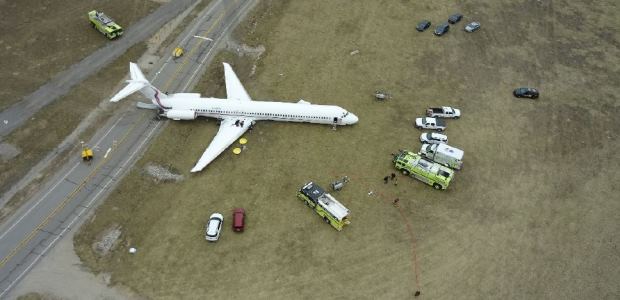
NTSB to Determine Cause of Rejected Takeoff Incident
One passenger suffered a minor injury; there was no fire, but the aircraft was substantially damaged in the March 2017 incident. The airplane was chartered to carry the University of Michigan men's basketball team to Washington Dulles International Airport in Dulles, Va.
The National Transportation Safety Board will meet Jan. 15, 2019, to determine the probable cause of the March 8, 2017, runway excursion accident involving a chartered jetliner that occurred during a rejected takeoff at Willow Run Airport in Ypsilanti, Mich. All 109 passengers and seven crew members evacuated the Boeing MD-83 aircraft via escape slides after the plane came to rest about 1,000 feet past the end of runway 23L.
One passenger suffered a minor injury; there was no fire, but the aircraft was substantially damaged. It was Ameristar Air Cargo Inc. flight 9363. The airplane was chartered to carry the University of Michigan men's basketball team to Washington Dulles International Airport in Dulles, Va., in order to play in the Big Ten tournament in Washington, D.C.
The pilot, Mark Radloff, 54, told authorities later that he realized during the takeoff roll that the plane was unable to climb, forcing him to abort the takeoff. The plane's landing gear collapsed as the aircraft plowed through a chain-link fence, across an airport road, and over a small ditch. The players, cheerleaders and the rest of the team's travel party evacuated, with the sole injury being a five-stitch cut on the leg of senior co-captain Derrick Walton Jr., The Detroit News reported.
The Federal Aviation Administration, Boeing, and Ameristar are parties to the NTSB investigation. The meeting will take place in the NTSB Boardroom and Conference Center, 420 10th St. SW, in Washington, D.C., and is scheduled to begin at 9:30 a.m.